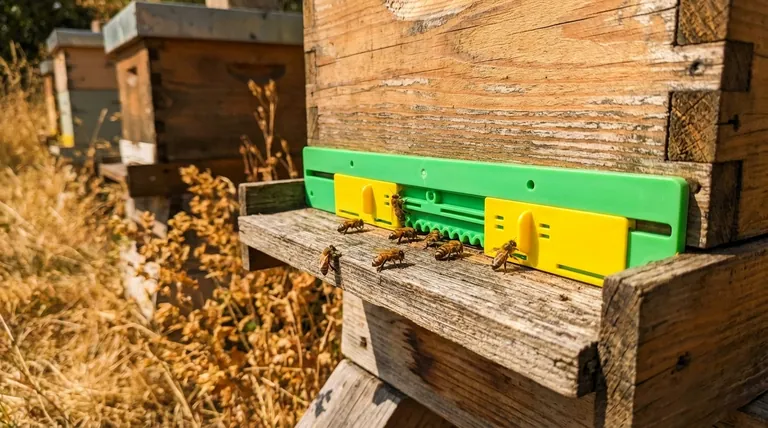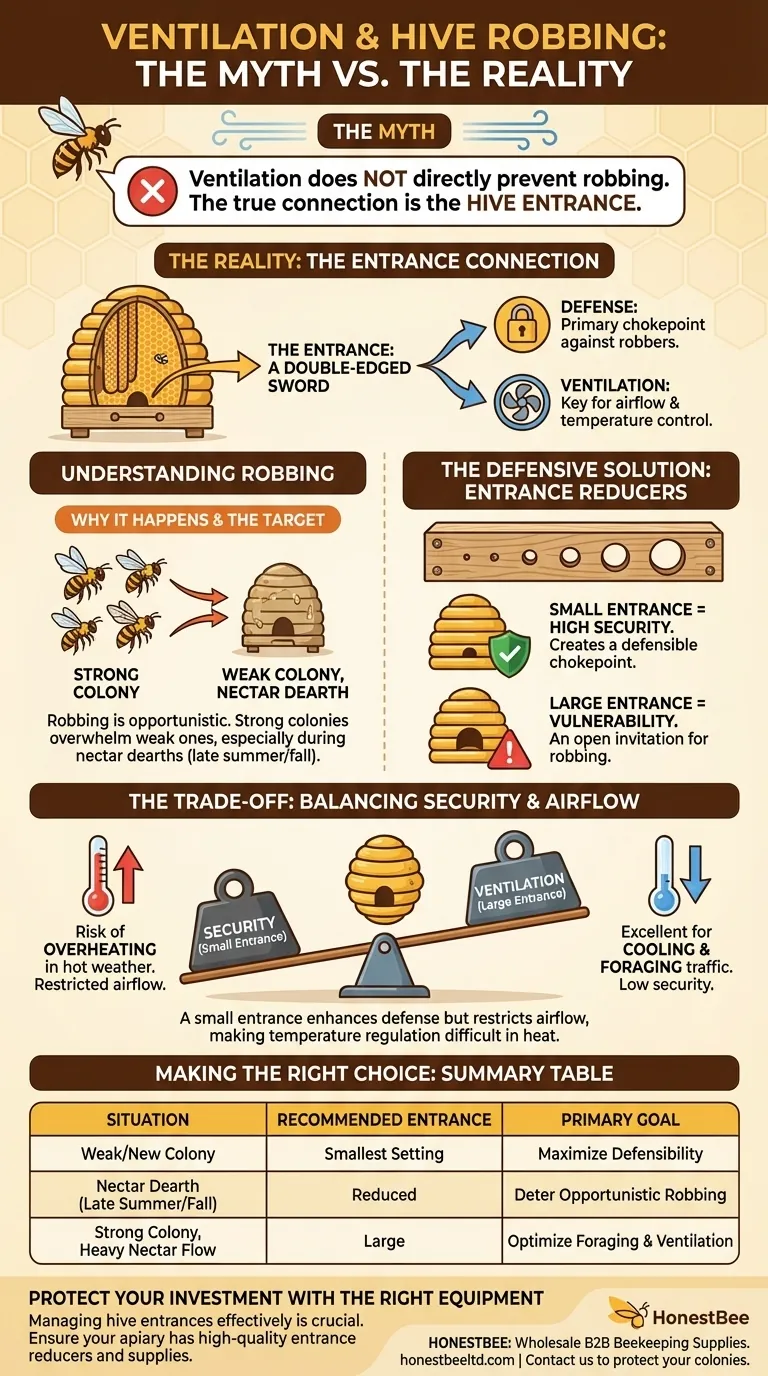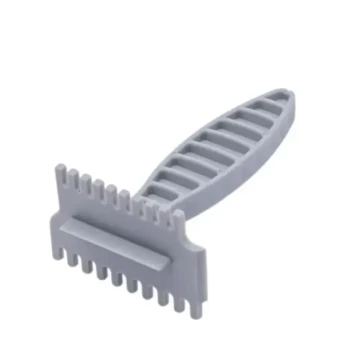While often discussed together, ventilation does not directly prevent robbing. The true connection lies in the hive entrance, which serves as both a key point for ventilation control and the primary defensive chokepoint against robbers. Robbing is a security issue addressed by making an entrance defensible, and the tool used—an entrance reducer—also happens to restrict airflow.
Robbing is a crime of opportunity driven by a weak colony's inability to defend its entrance. The most effective way to prevent it is by reducing the entrance size, a practice that incidentally also affects the hive's ventilation and temperature regulation.

Understanding the Robbing Instinct
Why Robbing Occurs
Robbing is a natural foraging behavior where bees from a strong colony overwhelm a weaker one to steal its honey stores. This behavior is most common during a nectar dearth—a period, often in late summer or fall, when natural nectar sources are scarce.
A hive that emits a strong smell of honey but shows little defensive activity at the entrance becomes an irresistible target.
The Target: A Weak or Stressed Colony
Robber bees are opportunistic. They probe for weaknesses and will target any colony that cannot mount an effective defense.
This includes newly installed packages, nucleus colonies, hives with low populations due to disease, or any colony whose entrance is too large for its population to guard effectively.
The Hive Entrance: Security vs. Airflow
The Entrance as a Defensive Bottleneck
The single most critical factor in preventing robbing is the size of the hive entrance. A small, constricted entrance is a defensive chokepoint.
It allows the colony's guard bees to concentrate their efforts, making it far easier to repel intruders one by one. A wide-open entrance on a weak hive is an open invitation for a robbing attack.
How Entrance Reducers Prevent Robbing
An entrance reducer is a simple wooden block that physically shrinks the hive opening. By setting it to its smallest opening (often just large enough for a single bee to pass through), you create a highly defensible position.
This is the primary mechanical defense against robbing. It has nothing to do with airflow and everything to do with physical security.
The Indirect Connection to Ventilation
Managing a hive entrance is a balancing act. While a small entrance is crucial for defense, it also restricts airflow. This can be problematic during hot weather, as it makes it harder for the bees to ventilate the hive and prevent overheating.
Conversely, a wide-open entrance is excellent for ventilation and high-traffic foraging during a strong nectar flow, but it leaves the colony vulnerable if conditions change.
Understanding the Trade-offs
Security vs. Traffic Flow
A primary trade-off is defense versus foraging efficiency. A tiny entrance is highly secure but can create a "traffic jam" for the colony's own foragers trying to enter and exit.
This can slow the colony's growth during periods of abundant nectar.
Security vs. Temperature Control
The most significant trade-off is security versus temperature regulation. In peak summer heat, a strong colony needs a large entrance to facilitate the fanning behavior that ventilates the hive and cools the brood nest.
Reducing the entrance for security reasons during a heatwave can contribute to the colony overheating, a serious risk to its health. The beekeeper must assess which risk is greater at any given time.
Making the Right Choice for Your Hive
The key is to adjust your hive management strategy based on the specific conditions of the colony and the environment.
- If you are managing a weak or new colony: Always use the smallest setting on your entrance reducer to maximize defensibility, regardless of the season.
- If you are in a nectar dearth (late summer/fall): Reduce the entrances on all hives, as even strong colonies can be targeted when resources are scarce.
- If you are managing a strong, populous colony during a heavy nectar flow: Provide a larger entrance to optimize foraging traffic and internal hive ventilation.
Proactively managing your hive's entrance size based on colony strength and seasonal conditions is the single most effective strategy for preventing robbing.
Summary Table:
| Situation | Recommended Entrance Size | Primary Goal |
|---|---|---|
| Weak/New Colony | Smallest Setting | Maximize Defensibility |
| Nectar Dearth (Late Summer/Fall) | Reduced | Deter Opportunistic Robbing |
| Strong Colony, Heavy Nectar Flow | Large | Optimize Foraging & Ventilation |
Protect Your Investment with the Right Equipment
Managing hive entrances effectively is crucial for colony security and health. Ensure your apiary is equipped with durable, well-designed entrance reducers and other essential supplies.
HONESTBEE supplies commercial apiaries and beekeeping equipment distributors with high-quality, wholesale beekeeping supplies. We help you build stronger, more secure hives.
Contact our team today to discuss your wholesale needs and protect your colonies from robbing.
Visual Guide

Related Products
- Multi-Functional Sliding Hive Entrance for Beekeeping
- HONESTBEE Advanced Ergonomic Stainless Steel Hive Tool for Beekeeping
- Professional Dual-End Stainless Steel Hive Tool for Beekeeping
- Professional 3-Bar Frame Grip with Integrated Hive Tool
- Professional Galvanized Hive Strap with Secure Locking Buckle for Beekeeping
People Also Ask
- What are some alternative strategies to using entrance reducers? Empower Your Bees for Natural Hive Defense
- What is the purpose of placing an object in front of the hive entrance after a move? A Guide to Forced Reorientation
- How does the sliding design of the entrance reducer benefit beekeepers? Achieve Ultimate Hive Control
- What are the different entrance sizes for an 8 or 10-frame Langstroth hive? A Guide to Seasonal Management
- What size is the entrance hole in a native bee hive? The 13mm Standard for a Thriving Colony



















